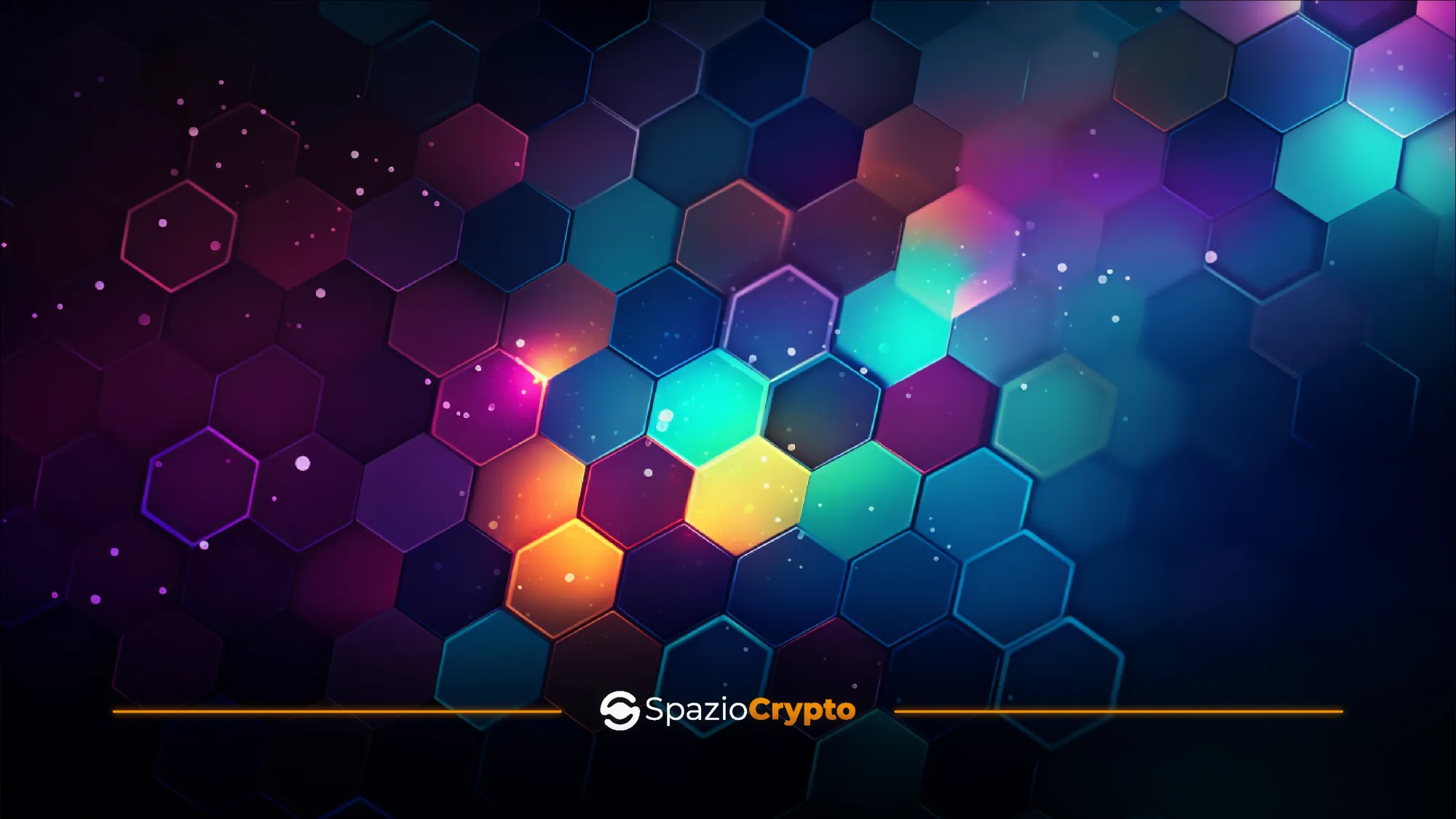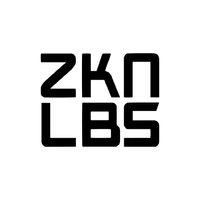
Blockchain Interoperability: An In-Depth Guide
Interoperability in blockchain denotes the ability of systems and networks to communicate and interact effectively with each other, and is essential to unlock the full potential of blockchain and to create a truly global and interconnected ecosystem.




The blockchain, with its revolutionary potential for decentralisation and immutability, is proving to be a transformative technology in multiple sectors, from finance to logistics, from healthcare to digital identity management. However, as blockchain continues to gain traction, a crucial challenge arises: interoperability between different blockchains and platforms.
Interoperability in blockchain denotes the ability of systems and networks to communicate and interact effectively with each other, and is essential to unlocking the full potential of blockchain and creating a truly global and interconnected ecosystem.
In this exploration of Spaziocrypto, we will take an in-depth look at the concept of interoperability in blockchain, analysing its implications, challenges and emerging solutions. From conceptual underpinnings to a discussion of innovative designs and protocols, we will attempt to shed light on how interoperability is shaping the future of blockchain and how it is affecting key sectors of the digital economy.
Interoperability in the Blockchain: What Does It Mean?
This is a fundamental concept for the development and large-scale adoption of blockchain technology. Interoperability refers to the ability of different systems and networks to communicate and operate together effectively and synergistically. In the context of blockchain, this concept translates into the ability of different blockchains and platforms to interact smoothly and seamlessly with each other, enabling the transfer of assets and data reliably and securely.
Importance of Interoperability
Interoperability is crucial for several reasons. First, it fosters adoption and innovation, allowing developers of smart contracts to integrate and use different blockchains to meet the specific needs of their projects. Secondly, it promotes efficiency and smooth transactions by removing silos and barriers that can slow down the process of exchanging assets and data. Finally, interoperability fosters global interconnectedness, allowing blockchains to collaborate on an international scale to address common challenges and create new opportunities.
Challenges, Obstacles and Possible Solutions
Despite its potential, interoperability in blockchain is still in its infancy and presents several challenges and obstacles. These include differences in protocol and architecture between different blockchains, which can complicate the interaction and exchange of data. In addition, security and privacy issues can be a further obstacle, as the transfer of assets and data between different blockchains could pose additional risks. To address interoperability challenges, several innovative approaches and solutions have emerged. One of these is the standardisation of protocols, which allows different blockchains to communicate more efficiently and reliably. In addition, bridges and gateways have been developed that facilitate the exchange of assets and data between different blockchains, enabling greater interoperability and interconnection. Other approaches include the implementation of cross-chain interoperability protocols, which allow blockchains to interact directly with each other without intermediaries.
Approaches to reach interoperability
In order to overcome the challenges and achieve the desired interoperability between different blockchains, several approaches and solutions have been developed. In this chapter, we will explore these approaches in detail and how they contribute to achieving the goal of an interoperable blockchain network.
Standardisation of Protocols
One of the main ways to achieve interoperability is through standardisation of protocols. The adoption of common standards facilitates communication and data exchange between different blockchains. Projects such as Hyperledger and Enterprise Ethereum Alliance (EEA) are actively working to develop open and interoperable standards that allow different blockchains to interact in a uniform manner.
Programming Interfaces (APIs) and Communication Protocols
Programming Interfaces (APIs) and Communication Protocols play a crucial role in facilitating interoperability between different blockchains. They enable applications to access and interact with different blockchains in a uniform and standardised way. Protocols such as WebSocket and gRPC provide a robust infrastructure for communication between different blockchain platforms.
Token-based Interoperability Solutions
Some interoperability solutions rely on the use of tokens to facilitate the exchange of value between different blockchains. Projects such as Wrapped Bitcoin (WBTC) tokenize Bitcoin on the Ethereum blockchain, allowing users to use Bitcoin on decentralised applications (dApps) based on Ethereum. These solutions provide a bridge between blockchains with different use-cases and functionalities.
Cross-Chain Interoperability Protocols
Cross-chain interoperability protocols enable the direct exchange of assets and data between different blockchains without the need for centralised intermediaries. Projects such as Polkadot, Cosmos and Avalanche use technologies such as relayer chains and bridges to facilitate communication between blockchains. These protocols are attempting to offer a comprehensive solution for interoperability between blockchains, enabling the smooth transferability of assets and data between different platforms.
Each approach has unique advantages and challenges, and implementing interoperable solutions requires a careful assessment of the specific needs of the project. It is important to consider factors such as security, performance and scalability during the design and implementation process of interoperable solutions. Now, we will look at case studies of projects and protocols that are adopting these solutions to achieve complete and reliable interoperability.
Case Studies: Projects and Protocols of Interoperability
The analysis of case studies of projects and protocols of interoperability in blockchain can provide us with a valuable opportunity to understand the challenges and practical solutions.
Polkadot
Polkadot is an interoperability platform designed to enable different blockchains to communicate and share data with each other. It uses a network of relays and parachains to facilitate the exchange of messages and transactions between different blockchains. The key concept is 'horizontal scalability', which allows new blockchains (parachains) to be added to the main network (relay chain) to increase the overall capacity and functionality of the platform. Polkadot aims to overcome the scalability and interoperability limitations of existing blockchains, enabling the construction of complex and interconnected decentralised applications.
Polkadot's architecture is based on three main components:
Polkadot offers a feature-rich environment for the development of decentralised applications (dApps), Decentralised Finance (DeFi), and interoperable blockchain infrastructures. Through the use of relays, parachains and bridge chains, it is attempting to redefine the way blockchains interact and collaborate with each other, potentially paving the way for a new era of innovation and interconnection in blockchain.
Cosmos
Cosmos is an interoperability platform that uses the technology of "Zones" and "Hubs" to enable different blockchains to interoperate with each other. Cosmos's communication protocol, called Inter-Blockchain Communication (IBC), enables the exchange of tokens and data between the different blockchains within the Cosmos ecosystem. The Cosmos network consists of a series of interoperable blockchains, called 'Zones', connected by a main 'Hub', called the 'Cosmos Hub'. Each zone is an autonomous blockchain that can have its own rules and consensus logic, while the Cosmos Hub facilitates the exchange of tokens and data between the different zones.
So, the architecture of Cosmos is based on two main components:
Cosmos offers a modular and flexible approach to interoperability, enabling different blockchains to collaborate with each other in a ponentially secure and reliable manner.
Interoperability in the Blockchain: Conclusions and Future Perspectives
In the course of this article, we have examined in depth the concept of interoperability in the blockchain, exploring its definitions, importance in the blockchain ecosystem, challenges faced and approaches taken to overcome them. We analysed case studies of projects and protocols that are successfully addressing the issue of interoperability, including Polkadot and Cosmos.
During our analysis, we identified several key points:
Future Implications and Opportunities
Looking ahead, interoperability will continue to play a crucial role in the development of the blockchain ecosystem. Interoperability technologies and protocols will continue to evolve and improve, enabling greater integration and collaboration between different blockchains and platforms.
Interoperability paves the way for a number of opportunities, including:
Interoperability in the Blockchain: Future Challenges
Although full interoperability between blockchains seems an achievable goal in the medium to long term, there are also challenges and obstacles to be addressed. These include the need to ensure the security and privacy of transactions, the large-scale adoption and implementation of interoperable protocols, and the management of governance and compliance complexities. In conclusion, interoperability in blockchain represents an ambitious but crucial goal for the future of the blockchain industry. Through the adoption of innovative approaches and the development of interoperable protocols, a more integrated, interconnected and resilient blockchain ecosystem can be realised.
At Spaziocrypto, we believe that by continuing to collaborate and innovate, we can fully exploit the potential of blockchain technology to transform and improve many industries and applications. With this vision in mind, we look confidently towards the future, aware of the importance of interoperability as a catalyst for a true revolution in the era of blockchain.
Read Next
AI NFT: The Future of Web3 Collections
AI NFT transforms digital assets into interactive and intelligent experiences, revolutionising the Web3.
Peer-to-Peer Networks: The Heart of the Web3
Peer-to-peer networks are the basis of Web3: they decentralise, reduce costs and increase security and resilience.
Layer 3 Blockchain: The Bridge to the Web3
Layer 3 takes blockchain beyond performance and cost: connectivity, interoperability and real Web3 adoption.
What are dApps? Decentralised Apps on Blockchain
Learn what dApps are, how they work, their benefits, risks and potential use cases on blockchain.